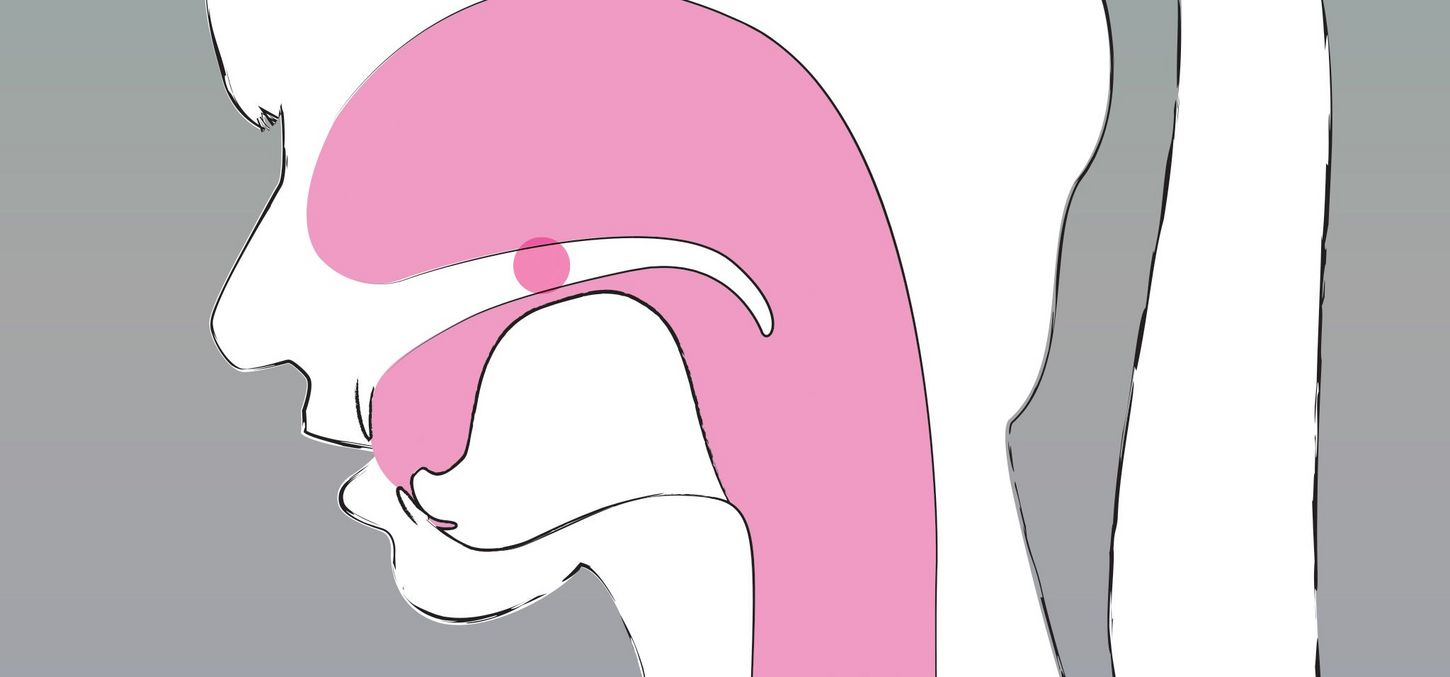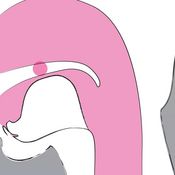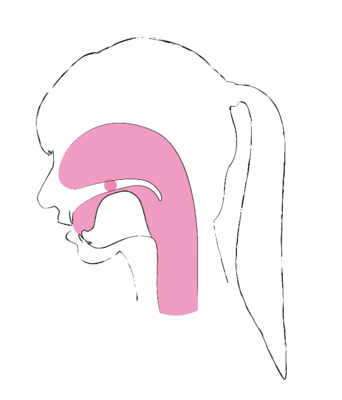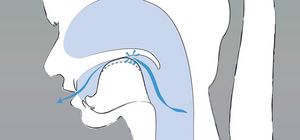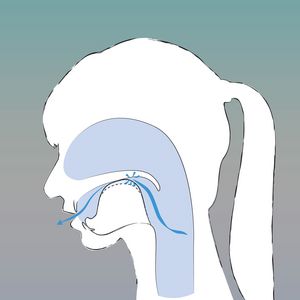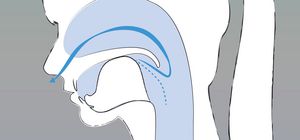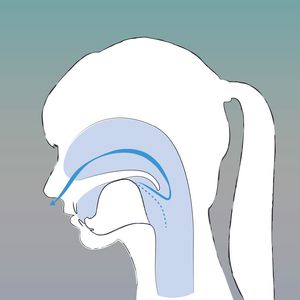Exercise
One of the best exercises to improve your pronunciation of Sanskrit is to consciously articulate all sounds produced at one place of articulation. Watch how similar the vibration of individual letters in the mouth is and how you can move from one letter to the next. In this exercise, the phonation space becomes closer and closer:
- i: vowel - The phonation space is completely open. You can feel a short vibration at the soft palate.
- ī: vowel - The phonation space is completely open. You can feel a longer vibration at the soft palate.
- y: semivowel - The phonation space is slightly narrowed down. You can only feel the vibration on the succeeding vowel.
- ś: fricative - The hard palate is almost closed off, the air swirls there.
- c: plosive - Short closure at the hard palate, the air is released afterwards.
- ch: plosive, aspirated - followed by a breath of air.
- j: plosive, voiced - pronounced with voice.
- jh: plosive, voiced, aspirated - again followed by a breath of air.
- ñ: nasal - The closure remains, air streams out through the nose.
Palatal vowels
- i / ī: Open your mouth slightly wider. Again, the short i is sounded only briefly, whereas the long ī lingers. Both vowels make the palate vibrate (palatal).
Examples:
- i: Mitte, Kind
- ī: Igel, Flieder, Kies
Palatal plosives
- ca: The tongue closes off the hard palate. The contact is released after slight pressure.
- cha: The analogue sound with more air.
- ja: The analogue sound with vibration or voice.
- jha: The voiced sound with more air.
Examples:
- ca: Tschechien
- cha: Charles, Charme
- ja: Dschschungel
Not to be confused with a German ja as in Jogurt! In Sanskrit, the German j sound corresponds to the letter Y. - jha: Jeep
Palatal nasal
- ña: The sound is nasalised.
Examples:
- ña: Señior,
Im German, an n in front of other palatal sounds.
Palatal semivowel
- ya: Produced by bringing the tongue closer to the palate (palatal).
Examples:
- ya: ja, Sanskrit: Yoga
Pronounced like a German j, not like a y as in Yvonne.
Palatal fricative
- śa: Here, the air swirls at the palate (palatal). To pronounce this sound, the teeth should remain closed with the lips opened noticeably. The tongue is relaxed and positioned directly behind the teeth. The resulting hissing sound thus becomes very sharp, almost as in a z.
- ha: A guttural fricative (5).
Examples:
- śa: Schale, Schach, Schatten
Pronounced quite hard.
